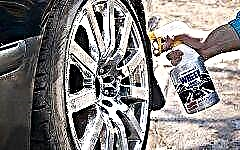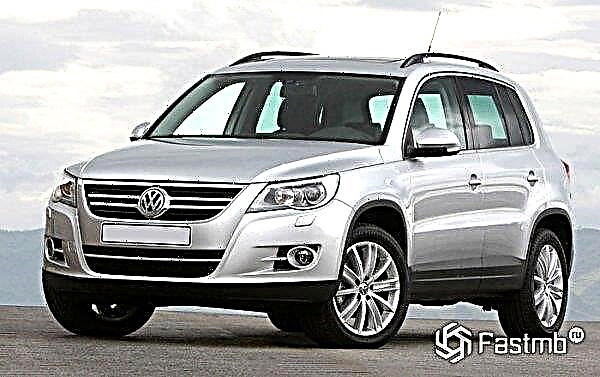

The content of the article:
- Reasons for poor-quality stove operation
- Prophylaxis
The first frosts come, and many car owners are faced with the problem of heating the car - in the cabin, the stove heats either weakly or does not work at all. This malfunction brings discomfort, since it is cold in the car, and also negatively affects traffic safety - the glass freezes and visibility is significantly impaired.
Reasons for poor-quality stove operation

There may be several reasons why the stove does not work satisfactorily, we will consider the main ones.
Before starting troubleshooting, you must carefully familiarize yourself with the device and the principle of operation of the car heating system. The interior heater device on all cars is almost the same, it consists of the main elements:
- fan motor;
- air duct system;
- inlet and outlet branch pipes;
- stove heat exchanger;
- valve for adjusting the coolant supply;
- heater operation control unit;
- dampers with mechanical or electric drive.
Typically, the reason lies in one of these elements:
Heater operation control unit malfunction
A faulty control unit (controller) is detected by the unstable operation of the fan in certain modes. An incorrectly operating air temperature sensor in the car interior can also affect the operation of the unit - it will give incorrect commands, and it will be impossible to provide a comfortable temperature in the car.
Failure of the antifreeze supply valve
This malfunction is very common in Russian-made cars. Mechanical wear or souring of the crane occurs, the sealing rubber elements are crushed or dry out.
In this case, the valve must be replaced, and it is advisable to replace it with the radiator.
Cabin filter
Many motorists are dismissive of the cabin filter - it either never changes or is simply thrown away. But do not forget that a clogged cabin filter can become an obstacle to the flow of warm air into the car interior.
Fan failure
It happens that the fan motor fails. This can be expressed in a whistle during its operation, a constant change in rotation speed from minimum to maximum and vice versa. With such a breakdown, the heater radiator may be hot, but this will not be enough to heat the passenger compartment.
The main reasons for this operation of the motor are the erasure of the graphite brushes of the collector, failure of the shaft bearing. If the motor does not work at all, it is necessary to check the fuse or relay in the electrical supply circuit.
Thermostat

This device is directly involved in the regulation of the coolant circulation circles. When the engine warms up immediately after starting, the circulation of antifreeze occurs in a small circle, in which the engine cooling jacket and the furnace radiator participate.
When the engine reaches operating temperature, a large circulation circle opens, to which the main radiator of the cooling system is added.
A faulty thermostat will directly affect the temperature in the car. It has two working positions: open and closed. Its failure is characterized by jamming in one of these positions.
- If the thermostat is stuck in the open position, then this becomes clear from the temperature of the coolant. When driving in high gears, it will be below normal, respectively, the air temperature in the car will be low. When driving in low gears with frequent stops and accelerations, the fluid temperature will be normal.
- If the thermostat is stuck in the closed position, the coolant temperature will be normal if driving in 4th and 5th gears. But driving in city mode will cause an increase in the temperature of the antifreeze, and the air temperature inside the car will also rise. But due to the high temperature of the coolant, the engine may overheat, which is fraught with its failure.
Heater heat exchanger clogged
Over time, deposits form inside the radiator, consisting of dirt and impurities, one way or another present in the cooling system. Also, the cause of such growths in the pipes may be the antifreeze itself, if it is of poor quality.
Also, the internal cavities of the heat exchanger can be clogged due to improper mixing of antifreeze. For example, it is strictly forbidden to add G11 to antifreeze brand G13. The resulting sediment will soon damage the radiator.
In addition, the outside of the heat exchanger can become clogged with dust, dirt, insects, fallen leaves.
Air cooled cooling system
If air enters the cooling system of the car's motor, the stove will not be able to fully perform its function.
Air can enter due to a leak in the cylinder head, which is eliminated by installing a new gasket.
It is also possible to air the system by performing vehicle maintenance when the coolant changes. Recommendations for venting the cooling system can be found in the vehicle manual.
The level of antifreeze should also be checked. If there is not enough of it in the system, the stove radiator will not be able to warm up to the required temperature. The air will flow into the cabin, but it will be either slightly warm or cold.
In this case, it is necessary to bring the antifreeze to normal by pouring it into the expansion tank. If the level drops again, check all hoses and connections for leaks.
The main radiator and stove should also be inspected. If there is a leak, the radiator changes. Although there is a wide range of specialty radiator sealants commercially available, they are not recommended as the reliability of such products is usually poor.
Defective pump
The pump (water pump) is designed for forced circulation of antifreeze through the engine cooling system, including to ensure the operation of the stove.
The pump is a metal cylinder with an impeller inside which is mounted on a pulley. As the pulley rotates, the impeller pushes fluid from the engine block through the pipes to the radiators.
The pump is usually driven by a belt drive, although electric drive is sometimes found.
The main pump malfunctions:
- Internal part of the impeller is worn. The poor quality of the metal or the aggressive effect of the coolant lead to the fact that during the actual rotation of the pump pulley, the circulation of antifreeze is very weak, respectively, the stove will not work.
- Broken belt from the engine crankshaft. In this case, the rotation of the pump will be impossible - as a result, the stove does not work, and the engine overheats.
- Mechanical jamming. The pump simply does not rotate, there is no antifreeze circulation.
With all these breakdowns, only replacement will help. Moreover, a "dying" pump can be diagnosed by the characteristic whistle under the hood when the engine is running and by the temperature of the hoses: if the hose is hot before the pump and cold after it, then it should be replaced without waiting for its complete failure.
Prevention of the stove in the cabin

So that the stove does not fail at the most inopportune time, you must follow simple rules:
- High quality antifreeze. The operation of not only the stove, but also the engine depends on its properties. It is necessary to use only good antifreeze and replace it regularly in accordance with the requirements of the car manufacturer.
- Clean radiator. Outside dirt and insects on the radiator can be removed with a vacuum cleaner. Internal cavities can be cleaned with special cleaning agents for the engine cooling system.
- Cabin filter. A dirty cabin filter affects not only the heating intensity of the passenger compartment, but also the ventilation and air conditioning system as a whole. And since a clogged filter often contains pollen of various plants, driving in such a car for allergy sufferers can result in an exacerbation of the disease.
When to consider the stove work abnormal
It is believed that if it is -25 degrees outside, then a properly operating heating system should provide a temperature of at least +16 degrees below the cabin and +10 at its ceiling. If these values are lower, then the stove is faulty.
It should be remembered that the more the car is, the more attention should be paid to the maintenance of the heating system. Compliance with all of the above rules and recommendations will help keep it in good condition, regardless of the year of manufacture and the make of the car.











